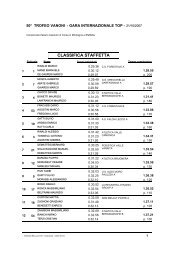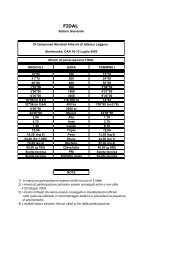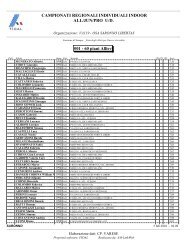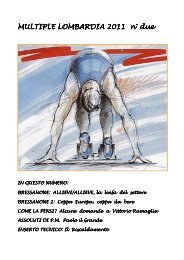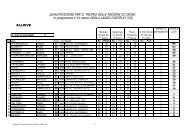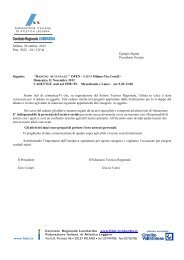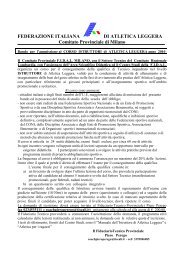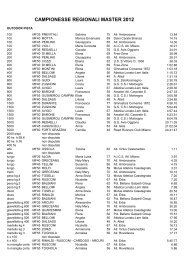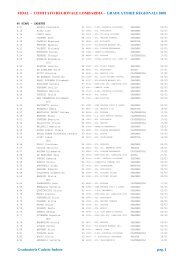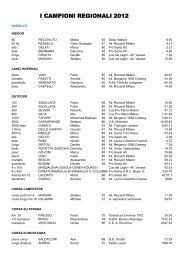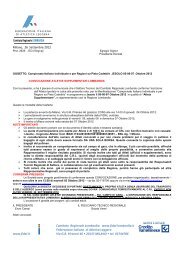UKA/London Marathon Altitude Programme ... - Fidal Lombardia
UKA/London Marathon Altitude Programme ... - Fidal Lombardia
UKA/London Marathon Altitude Programme ... - Fidal Lombardia
Create successful ePaper yourself
Turn your PDF publications into a flip-book with our unique Google optimized e-Paper software.
“ Training at altitude is so<br />
important to me as an<br />
athlete – you have to train<br />
like the best in the world<br />
if you want to beat them.”<br />
Mo Farah<br />
Mo Farah has been a<br />
regular at the <strong>UKA</strong>/<br />
<strong>London</strong> <strong>Marathon</strong><br />
altitude camps in Font<br />
Romeu and Iten<br />
<strong>UKA</strong>/<strong>London</strong> MARAthon (LM) ALtItUde tRAInIng CAMP AnnUAL RePoRt | 5<br />
Fudge’s PhD focused on the environmental factors leading to<br />
the success of elite east African runners. During that time he<br />
worked with elite runners in Kenya and Ethiopia, a number of<br />
whom are World Record holders and/or World and Olympic<br />
medallists (e.g. Keninisa Bekele, Eluid Kipchoge, Felix Limo,<br />
Brimin Kipruto, Geleta Burka, Sileshi Sihine and others).<br />
Jones has been working with and advising Paula Radcliffe<br />
on her altitude strategy for the past 15 years, including<br />
conducting regular lab tests in Loughborough. More recently,<br />
he has been advising and working with Mara Yamauchi on her<br />
altitude strategy.<br />
The two altitude venues chosen by <strong>UKA</strong> and LM were Font<br />
Romeu, France and Iten, Kenya. Both are established altitude<br />
venues at 1800m (6000ft) and 2385m (8000ft) respectively.<br />
Key to the venue selection process was giving consideration to<br />
the preferred time of year to take large groups of UK athletes<br />
and coaches to altitude. These were identified as being two<br />
periods of four to five weeks; spring (April/May) and autumn/<br />
winter (Oct/Nov).<br />
In addition to the core ‘large group’ altitude camps, a rotational<br />
model of exposure to altitude with smaller groups is also<br />
integral to the altitude programme. This involves approximately<br />
three to six week blocks at high altitude and four<br />
to six week blocks at sea level, periodising the<br />
exposure to altitude to best prepare athletes<br />
and support the key domestic and international<br />
track, cross country and road events, including<br />
annual major Championships. The periodisation<br />
altitude model prolongs the time athletes spend<br />
at altitude so that the potential benefits can be<br />
maximised over a twelve month period.<br />
This is a model favoured by British athletes<br />
including Mo Farah, Chris Thompson and<br />
Paula Radcliffe.<br />
“There’s no doubt that training at altitude in Kenya and Font<br />
Romeu has made me a better athlete,” says Farah. “The<br />
support of <strong>UKA</strong> and <strong>London</strong> <strong>Marathon</strong> means I’ve had the<br />
opportunity to increase the amount of time I’ve spent in these<br />
locations, but also to increase the benefits due to the rigorous<br />
scientific support and planning. You have to train like the<br />
best in the world if you want to beat them. I’ve no doubt that it<br />
contributed to my major successes in 2010, helping me to win<br />
double gold in Barcelona.”






